9+ SAMPLE Sales Consignment Contract
-
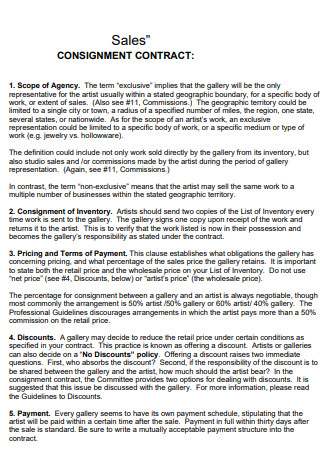
Sales Consignment Contract
download now -
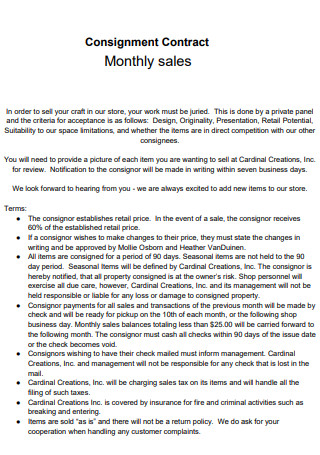
Monthly Sales Consignment Contract
download now -
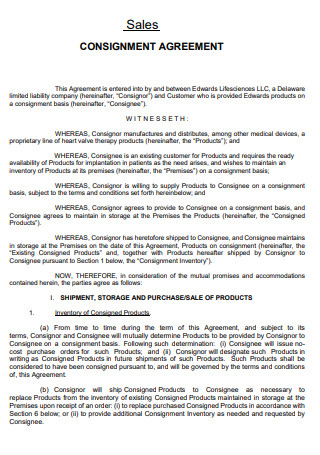
Product Sales Consignment Contract
download now -
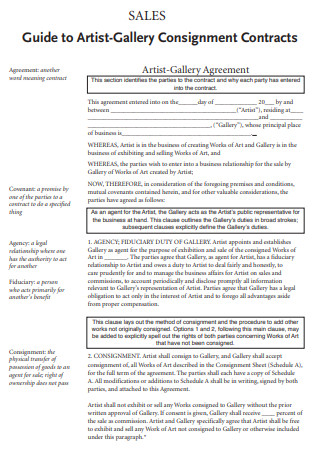
Artist Gallery Sales Consignment Contract
download now -
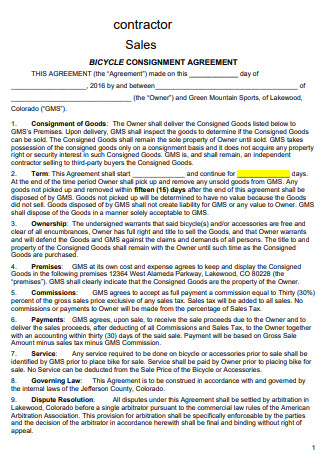
Bicycle Sales Consignment Contract
download now -
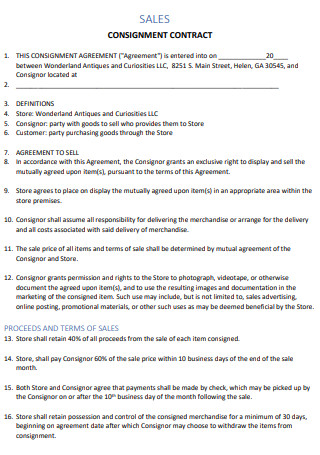
Standard Sales Consignment Contract
download now -
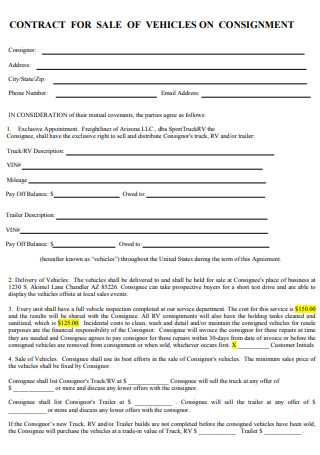
Vehicle Sales Consignment Contract
download now -
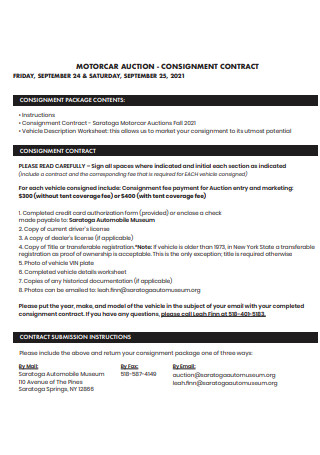
Sales Auction Consignment Contract
download now -
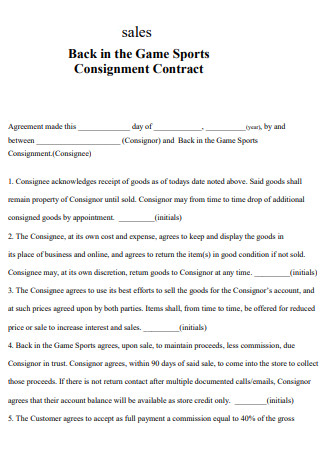
Sports Sales Consignment Contract
download now -
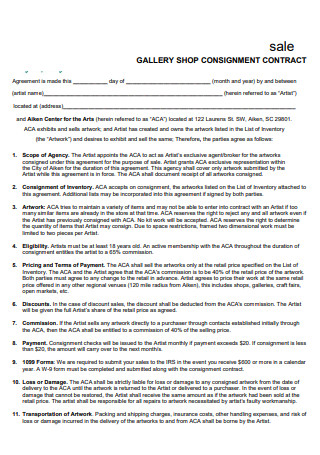
Gallery Shop Sales Consignment Contract
download now
FREE Sales Consignment Contract PDF s to Download
9+ SAMPLE Sales Consignment Contract
What Is a Sales Consignment Contract?
Benefits of Using a Sales Consignment Contract
Important Elements of a Sales Consignment Contract
How to Sell Products on Consignment Contracts
FAQs
What is consignment?
Does consignment need insurance?
What is the difference between a sales contract and a consignment contract?
What Is a Sales Consignment Contract?
A sales consignment contract is a type of business document which is made between an individual who has an item or set of items to sell and another person or a business who is willing to sell said the said item or set of items on their behalf. This type of business comes at a small cost, as the individual who is offering the item for sale should agree to pay the seller a percentage of the sale price or a set fee for their services. Because a sales consignment contract can be a legally binding document, it’s critical that the conditions are clear and fair to all parties.
Benefits of Using a Sales Consignment Contract
Listed below are the benefits that can be had when someone resorts to using a sales consignment contract:
Important Elements of a Sales Consignment Contract
Here are the key sections that should be included whenever a sales consignment contract is being made:
How to Sell Products on Consignment Contracts
If you’re a new or a small business owner, chances are you have considered selling some or all of your items through consignment. This enables your business to grow without any hassle of paying additional charges upfront. With that being said, here is how to sell products on consignment:
-
1. Check the Store’s Compatibility With Your Products
This is the first step to do when selling items through consignment. In this step, go to the retail store of your choice and spend some time looking around before consigning. Examine its appearance, feel, and look. After that, examine the condition of the products being displayed, how they are displayed, and the costs of comparable products. To maximize compatibility, look for consignment stores that sell the same general sort of products you do to increase your chances of selling.
-
2. Maximize Traffic and Ensure That Your Products are Displayed
After checking the store of your choice and entering consignment, this is the next step. If you select a shop that draws a large number of consumers, you will have a higher chance to sell your items quickly. Many consignment businesses come and go rapidly, so always consign with a store that has an established track record and has been in business for a long time. And in order to maximize traffic, even within the shop, you must ensure that your items are in the line of sight of customers who frequent the store.
-
3. Draw Out a Timetable
In the third step, this is where you determine a timeline. You need to keep in mind that you should Allow the consignment shop some time to sell your stuff. If they will be unable to sell your stuff within the timetable you’ve given to them, you can make arrangements to have them removed. Perhaps you selected the wrong store selection, or their shop location is inconvenient for you. Whatever the cause, remember that unsold goods will mean that your money is dormant.
-
4. Determine the Fees
If you manage to sell some items within the timetable, then great. Now, in this step, make certain you understand the percentage you will receive from the sale. Besides the sales %, find out whether any additional expenses will be imposed on you. Some stores add miscellaneous fees towards the percentage cut, often without alerting the consignee. Be wary of stores that do not provide you with the prices they intend to charge for your purchases. If you are not pleased with the price you are provided, look for another location.
-
5. Check the Inventory
It is good practice in selling via a consignment to inquire about how your inventory is managed and when things are paid for. If you’ve chosen shops with computerized inventory systems, there is a chance that they will retain more accurate records. Furthermore, be sure you acquire a receipt for the products brought in, as well as a statement detailing what is sold at the moment of payment. It is also important to determine how well your items are kept in the inventory.
-
6. Check Your Products From Time to Time
The final thing you can do is to check your products frequently. Inspect the condition of your goods from time to time, ensuring sure there are no defects, such as blemishes or tears in clothing or fractures in porcelain. When you turn over your product to the business owner, emphasize that it is in excellent shape. In this manner, he or she cannot subsequently inform you that they will not pay for that product because it has been tainted, especially if the goods have been unsold on their shelves for six months.
FAQs
What is consignment?
Consignment is an agreement in which things are left in the hands of a third party who is allowed to sell them. These sorts of agreements are available on a wide range of things, including artwork, clothes and accessories, and books. While secondhand stores and flea markets are more commonly connected with the concept of consignment, other sorts of retail trade may be considered as a specific form of consignment in which manufacturers rely on retail establishments to sell their items to customers.
Does consignment need insurance?
Yes, consignment needs insurance. In fact, a specific type of insurance exists just for that, which is called consignment insurance. It is a type of insurance that protects against loss or damage to items on consignment, loan, auction, or in the process of transfer. Consignment insurance differs from inventory insurance in that it pays out only if the damage or loss occurs while the property is not actively kept, maintained, or cared for by the owner.
What is the difference between a sales contract and a consignment contract?
The difference is that a sales contract is used whenever you are preferring to maximize profit margins in your business while a consignment contract is used should large-scale production be needed for your business since it can drastically reduce the workload through the help of a consignor.
To recap, a sales consignment contract allows you, as a fledgling business owner or a struggling artist, to let someone else sell your products or your works of art on your behalf. As a token of sorts, the consignee usually takes a small commission of the sales of the product, with the consignor taking the rest of the sales. You can find plenty of examples of this kind of document in this article should you need a reference when you’re drafting one.
